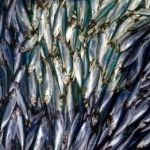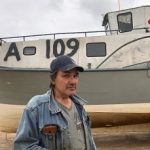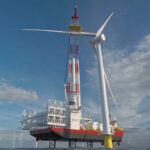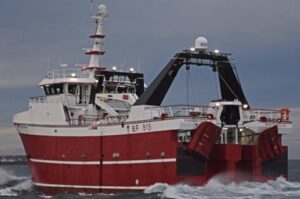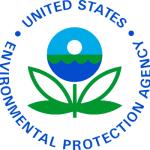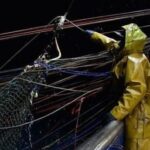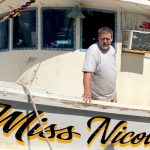Tag Archives: Bering Sea crab
Cook Inlet fisheries to get $9.4M in disaster relief for 2018, 2020
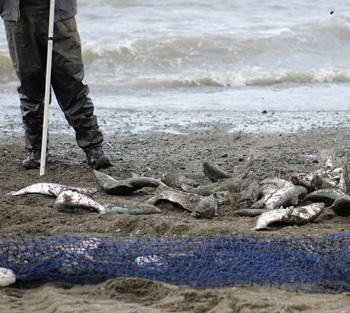 Two Cook Inlet salmon fisheries will receive more than $9.4 million in federal disaster relief that was held up, in part, by technical difficulties. They’re among ten Alaska fisheries getting money, the state’s Congressional delegation announced Friday. In all, ten fisheries across the state will receive $277 million for disasters dating back to 2018. They include 2020’s Upper Cook Inlet salmon fishery and 2018’s Upper Cook Inlet east side setnet fishery. Other fisheries that will receive money through the distribution include Bering Sea crab, Kuskokwim River and Norton Sound salmon and Gulf of Alaska pacific cod. more, >>CLICK TO READ<< 13:39
Two Cook Inlet salmon fisheries will receive more than $9.4 million in federal disaster relief that was held up, in part, by technical difficulties. They’re among ten Alaska fisheries getting money, the state’s Congressional delegation announced Friday. In all, ten fisheries across the state will receive $277 million for disasters dating back to 2018. They include 2020’s Upper Cook Inlet salmon fishery and 2018’s Upper Cook Inlet east side setnet fishery. Other fisheries that will receive money through the distribution include Bering Sea crab, Kuskokwim River and Norton Sound salmon and Gulf of Alaska pacific cod. more, >>CLICK TO READ<< 13:39
‘Deadliest Catch’ Survived Its Biggest Battle Yet
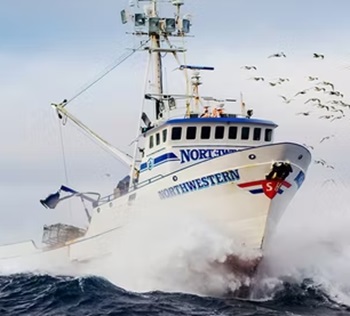 At the start of Season 19, Deadliest Catch was enduring an obstacle that could have sunk the entire program. When the Alaskan Department of Fish and Game canceled the entire season due to the population of winter snow and red king crab shrinking, production decided the show must go on. Deadliest Catch Executive Producer Aaron Starr-Paul told Deadline, “Fans can anticipate another great season of Deadliest Catch where we will document our captains as they participate in other sustainable Bering Sea crab and pot fisheries, such as Golden King Crab, Bairdi, and Cod.” For many fans, the type of catch holds little bearing. For the men and women braving the conditions, it certainly does; but what a difference a year can make! Season 20 of Deadliest Catch kicked off with the Red King Crab fishery reopening, leading to a derby-style race between the captains. Photos, more, >>CLICK TO READ<< 12:09
At the start of Season 19, Deadliest Catch was enduring an obstacle that could have sunk the entire program. When the Alaskan Department of Fish and Game canceled the entire season due to the population of winter snow and red king crab shrinking, production decided the show must go on. Deadliest Catch Executive Producer Aaron Starr-Paul told Deadline, “Fans can anticipate another great season of Deadliest Catch where we will document our captains as they participate in other sustainable Bering Sea crab and pot fisheries, such as Golden King Crab, Bairdi, and Cod.” For many fans, the type of catch holds little bearing. For the men and women braving the conditions, it certainly does; but what a difference a year can make! Season 20 of Deadliest Catch kicked off with the Red King Crab fishery reopening, leading to a derby-style race between the captains. Photos, more, >>CLICK TO READ<< 12:09
As the once-lucrative Bering Sea crab harvest resumes, Alaska’s fishers face challenges
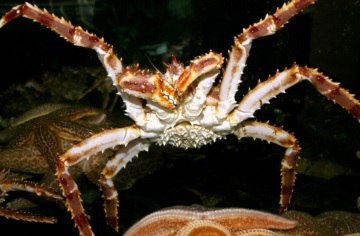 In the short term, Alaska crab fishers and the communities that depend on them will get a slight reprieve from the disastrous conditions they have endured for the past two years, with harvests for iconic red king crab to open on Sunday. In the long term, the future for Bering Sea crab and the people who depend on it is clouded by environmental and economic upheaval. The decision by the Alaska Department of Fish and Game to open harvests of Bristol Bay red king crab after an unprecedented two-year shutdown was a close call, a state biologist told industry members during a meeting on Thursday. >>click to read<< 16:08
In the short term, Alaska crab fishers and the communities that depend on them will get a slight reprieve from the disastrous conditions they have endured for the past two years, with harvests for iconic red king crab to open on Sunday. In the long term, the future for Bering Sea crab and the people who depend on it is clouded by environmental and economic upheaval. The decision by the Alaska Department of Fish and Game to open harvests of Bristol Bay red king crab after an unprecedented two-year shutdown was a close call, a state biologist told industry members during a meeting on Thursday. >>click to read<< 16:08
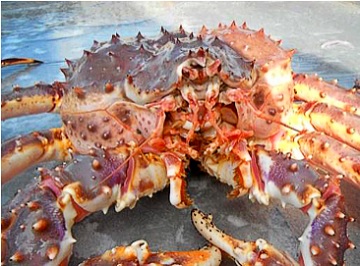
Alaska crab fishery collapse seen as warning about Bering Sea transformation
Less than five years ago, prospects appeared bright for Bering Sea crab fishers. Stocks were abundant and healthy, federal biologists said, and prices were near all-time highs. Now two dominant crab harvests have been canceled for lack of fish. For the first time, the Alaska Department of Fish and Game in October canceled the 2022-2023 harvest of Bering Sea snow crab, and it also announced the second consecutive year of closure for another important harvest, that of Bristol Bay red king crab. What has happened between then and now? A sustained marine heat wave that prevented ice formation in the Bering Sea for two winters, thus vastly altering ocean conditions and fish health. “We lost billions of snow crab in a matter of months,”,,, >click to read< 18:54
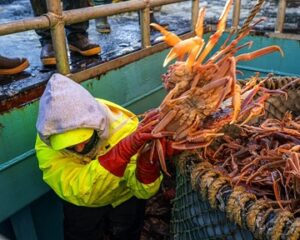
Disaster declaration unlocks potential federal aid for Alaska crabbers
A Commerce Department disaster declaration for Bering Sea crab and some Alaska and Washington salmon fisheries sets the stage for an end-of-the-year push to secure federal funds to help fleets and communities. The declaration announced Friday covers the Bristol Bay king crab harvests suspended for the past two years, and the snow crab harvest that next year will be canceled for the first time ever. Other fisheries covered by the declaration include the 2021 western Alaska Kuskokwim River salmon harvests as well as 2019 salmon fisheries in the Puget Sound and the 2020 Washington ocean salmon fisheries. >click to read< 08:04
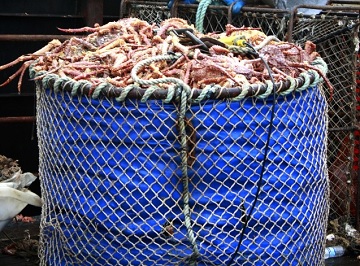
Bering Sea crab fleet braces for another blow
The commercial fishery has been around since 1966. In the 55 years since then, there have been just two other closures: once in the 1980s and again in the 1990s. The species is world-renowned and was largely made famous by the popular reality tv show “Deadliest Catch.” “It’s big news, and it’s hitting our industry really hard,” said Jamie Goen, executive director for Alaska Bering Sea Crabbers,,, “We’re disappointed and deeply concerned.” But, she said, it’s not only the fishermen who will be impacted. This hit affects everyone in the industry, roughly 70 vessels and over 400 fishermen and their families, along with the processors and fishing communities that rely on crab revenues. “We could kind of see a closure was coming, we just didn’t quite know when,” she said. >click to read< 08:36
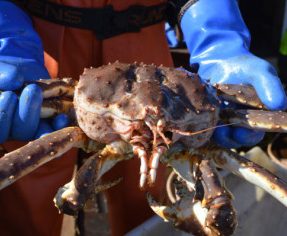
Optimism abounds in the Bering Sea crab fishery
Bering Sea crabbers saw upticks in crab recruits during a good fishery for the 2018-19 season, along with strong prices. The crab season opens in mid-October for red king crab, tanners and snow crab (opilio), and while fishing goes fast for red kings in order to fill orders for year-end markets in Japan, the fleet typically drops pots for the other species in January. Crabbers said they saw strong showings of younger crab poised to enter the three fisheries. Only male crabs of a certain size can be retained for sale. “For Bristol Bay red king crab, >click to read<10:29
Bering Sea crab prices increase big across the board
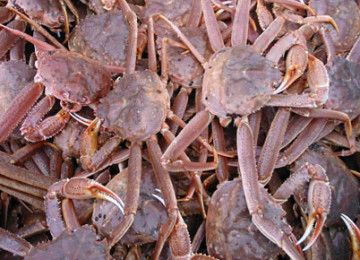 Only a handful of boats are still out hauling crab pots from the Bering Sea and they can be sure of a good price for their catch. It’s just been a really good year for crab all around. Jake Jacobsen is a four decade fishing veteran and director of the Inter-Cooperative Exchange, a harvester group that catches 70 percent of the Bering Sea crab quota. Right now the boats are finishing off the Tanner and snow crab shares. We haven’t even started the final prices for snow crab yet. We started out with an advance of $2.00 a pound but that really doesn’t mean anything. The advance price is just a number we throw out there so the fishermen have some money to pay their expenses as they go along. Audio, Read the rest here 18:35
Only a handful of boats are still out hauling crab pots from the Bering Sea and they can be sure of a good price for their catch. It’s just been a really good year for crab all around. Jake Jacobsen is a four decade fishing veteran and director of the Inter-Cooperative Exchange, a harvester group that catches 70 percent of the Bering Sea crab quota. Right now the boats are finishing off the Tanner and snow crab shares. We haven’t even started the final prices for snow crab yet. We started out with an advance of $2.00 a pound but that really doesn’t mean anything. The advance price is just a number we throw out there so the fishermen have some money to pay their expenses as they go along. Audio, Read the rest here 18:35
More info on AK IFQ cost recovery programs for halibut, sablefish, Bering Sea crab
 Those who hold quota shares of Alaska halibut, sablefish and Bering Sea crab pay a fee to the federal government for costs of managing and enforcing the fisheries. Information from Troie Zuniga, Fee Coordinator Operations and Management Division
Those who hold quota shares of Alaska halibut, sablefish and Bering Sea crab pay a fee to the federal government for costs of managing and enforcing the fisheries. Information from Troie Zuniga, Fee Coordinator Operations and Management Division NOAA Fisheries NMFS – Alaska Region(907) 586-7105 Read the rest here 20:51

































